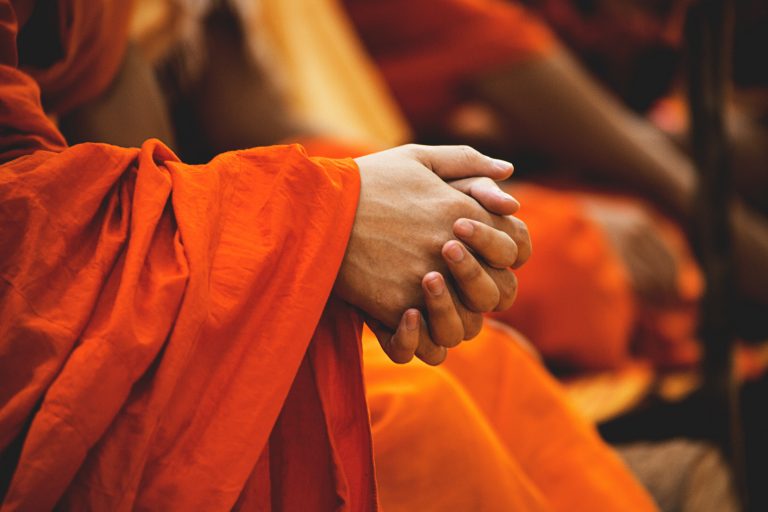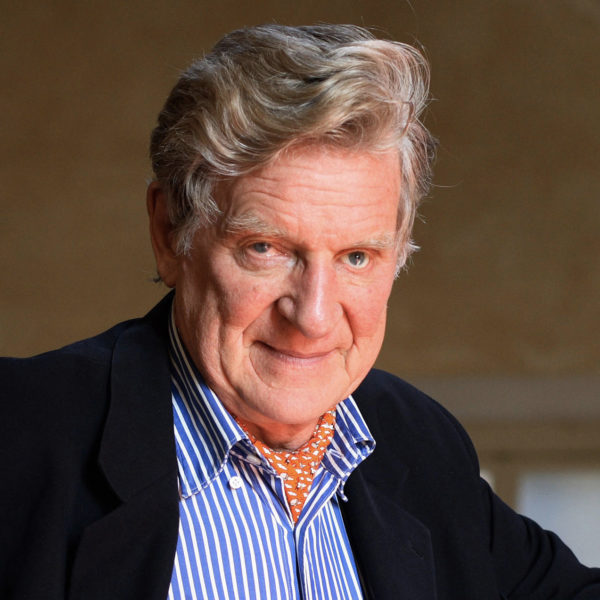
Image by Peter Hershey/Unsplash.
Where Is the Love in Today’s Resistance?
“Here in the world, anger is never pacified by anger. It is pacified by love. This is the eternal truth. Some do not realize that we are all heading for death. Those who do realize it will compose their quarrels…Happy indeed we live, friendly amid the haters. Among men who hate we dwell free from hate…I call him a charioteer who holds back the arisen anger as though holding back a swerving chariot. Others are only holders of reins.”
— Dhammapada, The Way of Truth, (trans. Sangharakshita), I, 5-6; XV, 1; XVII, 2
If only I had known Shakyamuni Buddha’s words in my youth, I might have saved myself and others many a post-rage heartache. Of course, Jesus says the exact same thing, which I must have heard, but too often failed to understand and practice. We tend to think these and other enlightened teachers’ instructions that we should live in love, root out hate and anger, and so on, are really very nice, but unrealistic and impractical.
The Buddhist definition of “love” (maitrī) is the will to the happiness of the beloved, always paired with compassion (karuṇā), the will to free the empathized from suffering. Under that definition, “love your enemy” is eminently practical. Your enemy is your enemy only because they see you as an obstacle to their happiness. They want to be happy, and so naturally hate you. If your enemy were happy without bothering you, then they would no longer bother to be your enemy.
To love your enemy is to make a new friend. In the Buddhist cosmos of endless entanglement with all life — life after life — to kill your enemy is to make a worse enemy. They will return in another life form and attack you all the more. Becoming enlightened means discovering the force of love, and so becoming the best friend of all sensitive beings.
I grew up with an image of myself as having a very hot temper, which seemed to serve me in the turbulence of a rather theatrical family with two brothers — one older, one younger. The older one pushed me around for my first twelve years, so I got in the habit of whipping up extreme emotions and threatening acts to defend my body from attacks.
Later on, losing my temper cost me some friendships, and part of my intense, questing years of adolescence and early 20s had to do with trying to find psychological understandings and practical disciplines to control negative emotions. “I need a ‘yoga for the emotions!’” was what I would say when I was 20, while I was giving up a loving family and schooling at Harvard for a seeker’s pilgrimage to India.
Eventually I found the Buddha Dharma and my very kind and capable teacher of its reality, its teaching, and its yogas for the mind — its notions and emotions. Though I learned a lot very quickly, sensing right away an effective path leading to self-control and peace, I didn’t use it that well at first. I mistook it as an escape route from the predicament of life. I thought the only way to get away from the pains of anger was to escape from any situation that could provoke it. I was looking for something outside, some “nirvana” where there was neither myself nor anyone else to be angry with.
I had an excellent teacher, what we call in Tibetan my “root teacher,” an elderly Mongolian lama who was very practical and deeply learned, also realistic and definitely quite psychic. When he would sense me meditatively heading out of body and into my picture of a nirvanic state of calm, he would show up at my room or my hiding place outside, under a tree, and interrupt me. “Hey now, what are you up to, what’s the use? Meditate later, let’s go do this or that!’ Or “Why don’t you take a break and get some sleep?”
I didn’t realize when he said “later,” he meant a lot later — in fact, after I had learned a lot more about what to expect inside there, in the inner realms of advanced meditational experiences. It was lucky I didn’t realize, as I might have run away, not believing I would need so much study before impatiently launching my mind out of this world. The quiescent states I was bent on exploring were so enticing, seemed so powerful and delicious. It takes a sophisticated yogic psychology we do not yet have in the west to understand that.
It is important first to cultivate further the already-immense capacity for love and compassion that has enabled us to become human. We have painstakingly evolved upward from living in animal embodiments more hard-wired for self-centeredness. Love can be cultivated more effectively before over-indulging in quietistic, dissociated states, through one-pointed serenity meditations.
His Holiness the Dalai Lama is my model in my effort to cultivate this sort of compassion. Knowing him up close for a long time is what has made me feel it is possible. I recently worked with a team to create an illustrated life story of the Dalai Lama. In the process, I became all the more inspired by renewed focus on how he has responded over decades to the very aggressive and oppressive enmity of the Chinese Communist Party, with its invading and occupying troops and colonizing settlers. He chose nonviolent actions of body, speech, and mind. He constantly called for dialogue to seek reasonable solutions, and he made strenuous efforts to make that enemy happy by secretly protecting it from obliteration, supporting its quest for wealth, and even encouraging its wish to emerge in the world with the restored dignity of a great nation. He wanted his enemies to be happy. He teaches how they could be much more so if they ceased dominating and destroying his Tibetan people, other “minority nations” under them, and even their own people.
He did not call for a war of liberation from the massive Chinese invasion and its colonial occupation with ethnicidal intent. He did not even approve a proposed campaign for an economic boycott at a time when he could have and when it would have made a big difference in China’s development. On a number of occasions, he avoided forcing his presence upon the Chinese leaders, and usually refrained from condemning them for their falsehoods, atrocities, oppressions, and persisting intransigence. He does, when appropriate, fearlessly speak truth to power in a civil, gentle, and even humorous manner.
In our present time of dreadful governance, planet wide, a time when oligarchic governments are tending to harm their own subjects almost more than their enemies, we need to resist and rebel, politically but nonviolently, courageously but gently, and even with humor and attention to letting the oppressors save face while learning to relent. Instead of growing bitter with anger against the enemy, we can love our enemies, finding joy ourselves in thinking how to benefit them.
What is “anger,” anyway? It is a mental addiction that arises from a feeling of weakness in a situation, where something is happening I don’t like, or something I like is being prevented from happening. Its addictiveness comes from its rush of energy, which temporarily makes me feel stronger. Biologically, it’s the famous fight or flight syndrome of the adrenal glands and cortisol rush. It is harmful, like an addictive substance, because I am further weakened after the rush, and usually I’ve made the situation worse by acting unskillfully in the heat of the moment.
The great Shāntideva, the Dalai Lama’s deep inspirer, says that anger arises from a feeling of frustration, which creates mental discomfort, which eventually explodes as destructive fire. His great secret teaching is to maintain good cheer, no matter what, which prevents the frustration which is anger’s fuel. “If you can do something about a bad thing, do it and don’t lose your good cheer! If you can’t do anything about it, why lose your good cheer on top of that!”
Today, we need cheerful resistance, cheerful revolution, never angry, never violent. That the people have this idea very widely is shown by the wonderful Women’s March on Washington, with millions saying no to the hate-mongers while wearing “pussy hats” to show their good cheer.
In Buddhist medicine, mental anger connects with physical bile energy, associated with fire, acidity, heat. When kept in balance it connects also to intelligence, one’s analytical acumen. In Tibetan yogas, anger re-channeled can be turned into the furor-fire (gtum mo, chaṇḍa), the physical inner heat that enabled Milarepa and other Himalayan yogis to live comfortably almost naked in the frozen mountain winters. The main purpose of such furor-fire is not that external heating system, but rather the more focused melting of the inner “cheerfulness-neurotransmitters” to bring them down from the brain to flow blissfully around the nervous system.
Ultimately anger is not bad — it is only our misknowing dependence on its illusory strength which causes us to allow it to take us over and use us as its tool — that is bad. We can free ourselves from being overwhelmed and used by anger by developing our natural tolerance, sensitivity, and gentleness. Then, we need also to figure out how to use the energy we have retrieved from anger to power our compassion. Tough love, fierce compassion — these are critical tools to use in turning the world toward the positive.
This gives us nonviolent anger, cheerful anger, fierce compassion, tough love. This is what the Dalai Lama’s life sets for us as an example and an inspiration. And this is what we now need to practice to finally get governments that enact the peoples’ will instead of some out-of-touch oligarchs’ unrealistic ideas.
Peace and good cheer are the way. The positive is the path as well as the goal. Love is “The Force” that Yoda urges us to trust and flow with. It is the unbreakable, diamond-clear light of the void that Buddha’s physical science discovered long ago, and it is the inconceivable realm of the quantum super-micro-nano field, beneath any wave-particle duality, where the open mind is the only, subtlest energy that combines uttermost peace with the blissful energy of loving creativity.
From the Buddha to Yoda, everything in the world tells us how to go with this force of love, the light side that illuminates even the dark side of hate — to give peace, be peace, and enjoy it along with everyone.
